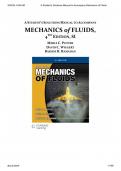Resume
Summary Notes: External Relations of the EU – Textbook Overview
- Cours
- 00000 (C09B3D)
- Établissement
- Katholieke Universiteit Leuven (KU Leuven)
These summary notes provide a concise and organized overview of the key concepts from the textbook used in the External Relations of the EU course. Covering essential topics and core principles, these notes are designed to support your understanding and revision of the following areas: • Foun...
[Montrer plus]












